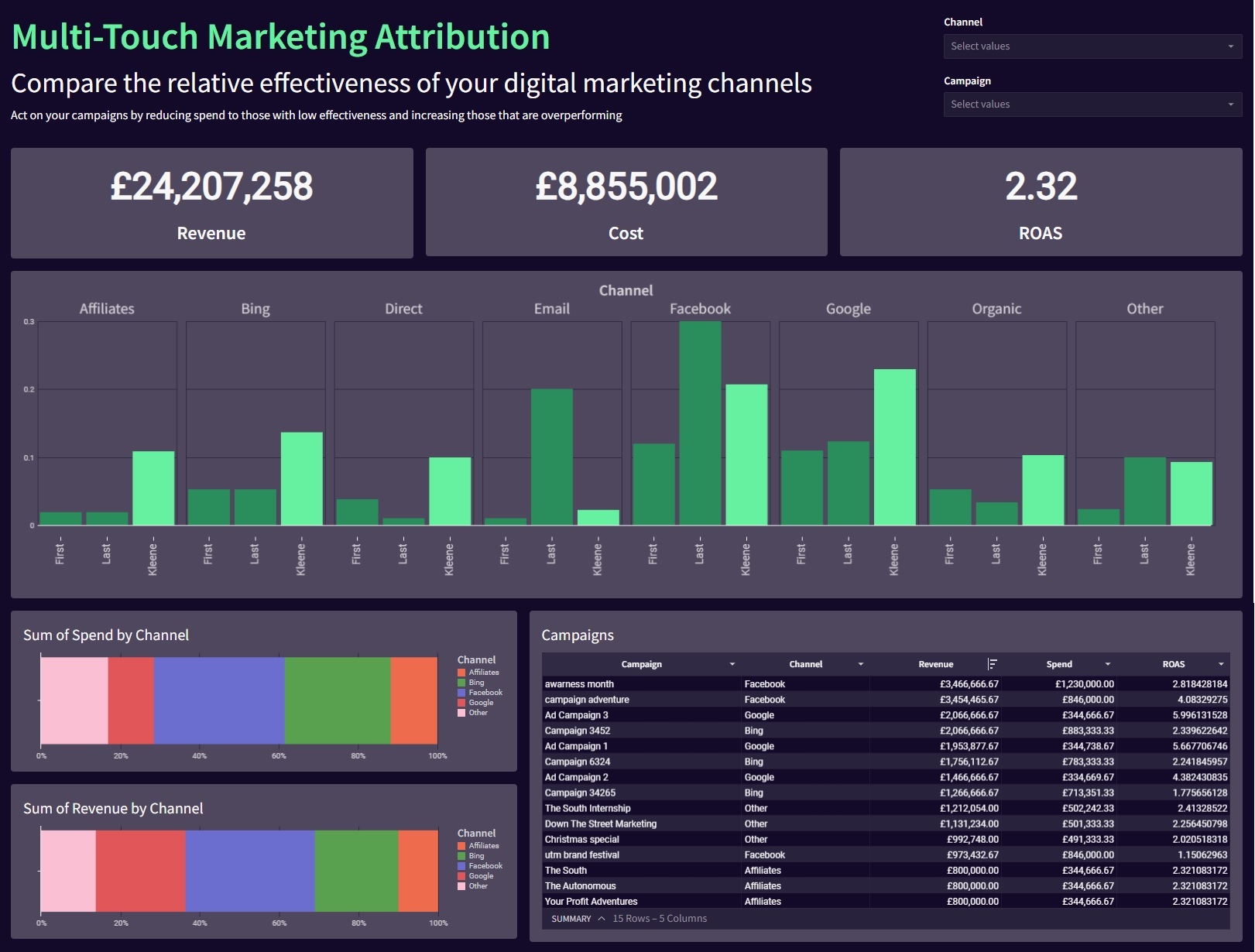In today’s data-driven business environment, extracting meaningful insights from raw data is a crucial task. However, data cleansing and standardisation can be time-consuming and error-prone, especially when dealing with metrics from different platforms and teams.
At Kleene.ai we have recently introduced a new feature called "advanced data recipes" to address these challenges. With Data Recipe, analysts can easily transform raw data into a clean and standardised data model, eliminating the need for manual SQL scripting.
Kleene.ai's advanced data recipes goes one step further by empowering analysts not only to establish robust metrics layers, streamline data analysis, and unlock the full potential of their data-driven initiatives but also to customise the way you model your data.
Metrics layers play a crucial role in ensuring accurate aggregation and comparison of data between different platforms. Each platform may have its own unique definitions and calculations for metrics such as clicks or views. Without a standardised metrics layer, it becomes challenging to directly compare these metrics across platforms. However, by implementing a metrics layer, organisations can establish consistent definitions and calculations for these metrics, but let’s have a closer look at what are the advantages of using data recipes to create metric layers:
Accurate Aggregation and Comparison between Platforms:
Metrics layers play a vital role in standardising metrics across platforms. Different platforms often use varied definitions for concepts such as clicks or views, making direct comparison challenging. By establishing a metrics layer, Kleene.ai ensures consistent definitions, enabling accurate aggregation and comparison of data across platforms. This empowers businesses to gain comprehensive insights and make informed decisions based on reliable data.
Accurate Aggregation and Comparison between Teams:
Within organisations, different teams may have their own interpretations and definitions of key performance indicators (KPIs). This disparity can lead to confusion and hinder effective decision-making. By implementing a metrics layer, you can facilitate proper definitions of KPIs, reducing data disparities between teams. This promotes a cohesive understanding of organisational goals and enhances collaboration across departments.
Fast and Flexible Data Analysis:
Data Recipe significantly expedites the data analysis process. By standardising metrics before data analysis, analysts are spared from manual and error-prone data standardising tasks. This allows them to focus on extracting insights and performing in-depth analysis, leading to faster and more accurate decision-making.
Empowering Less Data-Fluent Employees:
Without a metrics layer, employees with limited data proficiency often rely on data engineers to clean and transform data for specific use cases. This creates bottlenecks, slows down productivity, and limits the independence of less data-fluent individuals. However, with Data Recipe, these employees can work more efficiently, as the feature provides a user-friendly interface for customising data models according to their specific needs. This empowers individuals across the organisation to access and analyse data independently, fostering a data-driven culture.
Customise the way you model your data based on your specific business case
Kleene.ai stands out from other platforms by offering advanced automation and customization capabilities for data recipes. With Kleene.ai, you have the power to automate the deployment of data recipes, saving valuable time and effort for analysts. Moreover, unlike other platforms, it allows you to fully customise the way you model data to match the specific needs and requirements. Whether it's organising tables or customising fields Kleene.ai offers flexibility and control over the data modelling process.
Conclusion
Advanced Data Recipes can really change the way data analysts approach data cleaning and standardisation. By automating the process and eliminating the need for SQL scripting, analysts can swiftly transform raw data into a clean and standardised data model. The resulting metrics layer facilitates accurate data aggregation and comparison, empowers teams, and enables fast and flexible data analysis. Not having a metrics layer poses significant risks, including inaccurate comparisons, a lack of data trust, and inefficient manual work.
With Kleene.ai's automation, customization, and future modification capabilities, you have a powerful toolkit at your disposal to create and adapt data recipes precisely according to your needs. Experience the freedom and efficiency of tailored data modelling and unleash the true potential of your data analysis journey with Kleene.ai.
Take the first step towards a data-driven future and gain a competitive advantage in your industry. Get free advice from our data experts to start your data analytics journey with Kleene.ai.
Share this article
Related articles:







